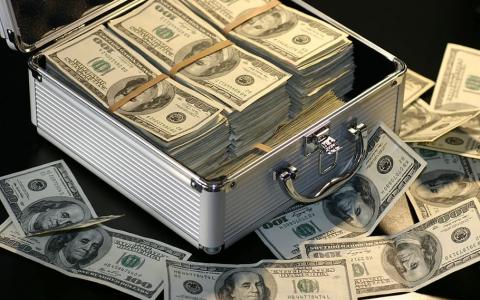
(Invesco) The Federal Open Market Committee (FOMC) has released the minutes from its December meeting, revealing a more hawkish stance that impacted the shape of the yield curve and shook up equity sector leadership.
Below we answer 10 questions about this news.
1. What happened?
Participant remarks highlighted that the FOMC has become more concerned about inflation and believes that the economy is closer to full employment than is typically the case at the beginning of the policy normalization process.
2. Is there new information?
The FOMC had previously telegraphed the onset of the policy tightening cycle. However, the minutes suggested that a faster pace of rate increases than in the previous cycle may be warranted. Further, the FOMC appears eager to reduce the size of its balance sheet. Discussions of quantitative tightening have already commenced, with expectations that it will begin relatively soon after the first rate hike and proceed faster than it had in the prior cycle.
3. What’s priced in? Did financial conditions change?
The markets are pricing in at least three interest-rate hikes in 2022 with a 75% probability that the first rate hike arrives in March.1 Importantly, financial conditions remain easy.2 The credit markets have behaved3 and there has not been a worrisome strengthening in the US dollar.4
4. What happened to the shape of the yield curve?
Interest rates have risen across the yield curve. The 2-year US Treasury yield, which was trading between 20 and 30 basis points as recently as September, has climbed by over 13 basis points since the beginning of the year to 0.87% on Jan. 6, 2022.5 The 10-year US Treasury yield has climbed by more than 20 basis points to over 1.70%, returning to the 2021 high reached in late March, prior to the Delta variant arriving in the US.5
5. What can we expect from bonds based on history?
History suggests that interest rates tend to rise during a tightening cycle, with short rates rising more than long rates. There have been six Fed tightening cycles since 1990. From six months prior to first rate hikes until the end of tightening cycles, the 10- minus 2-year Treasury yield curve has flattened by an average of 90 basis points.6
6. What happened to the stock market?
In the wake of the incrementally hawkish FOMC minutes, stocks, as represented by the S&P 500 Index, fell over 2% from their all-time high, as of Jan. 5.7
7. What can we expect from stocks based on history?
If past is prologue, it’s normal for stocks to experience some near-term volatility in response to changing monetary policy.8 Beyond the initial policy shift, however, it’s also typical for stocks to recover and go on to post sound returns through the rest of the cycle (more on that later).8 In our view, stocks should continue to benefit from the same things the Fed is leaning into, namely strong economic and earnings growth.
8. What happened to sector leadership?
The previously high-flying technology stocks fell over 4% from their year-to-date highs.9 By contrast, deep-value cyclical stocks – financials and energy – are up almost 3% and 7%, respectively.10 Meanwhile, the defensive consumer staples sector has rung in the new year on a mildly positive note.11
9. What can we expect from sectors based on history?
Our instinct is to default to first principles. Basically, we see the Fed tapping the brakes by guiding interest rates higher and flattening the yield curve to restrain an overheating US economy. In that context, we think it’s too soon to rotate into deep-value cyclicals, which would likely require a steepening yield curve and an economic reacceleration. Absent an economic recession, we also believe the timing is wrong for defensives, which we wouldn’t expect to outperform meaningfully until the end of the current market cycle. In our view, ample yet moderating activity points to the potential for continued outperformance of structurally advantaged growth companies like those in the technology sector.
10. Where are we in the market cycle and how much longer do we have?
If our back-of-the-envelope math is correct, we think we’re at the mid-point of the cycle, which could ultimately last five years or more. The difference between the 10- and 2-year Treasury bond yield is roughly 0.75%.12 Assuming three rate hikes are priced in this year, that would leave room for three 25 basis-point rate hikes next year. If the Fed sticks to its plan to keep raising rates and ultimately inverts the yield curve in 2024, history suggests an economic recession may not occur for one or two more years after that. Granted, the Fed won’t be on autopilot and will change its plan as it deems necessary. Nonetheless, we foresee sufficient economic momentum to push stocks higher from here, perhaps meaningfully so.



